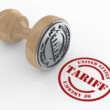An unimaginable number of changes have occurred globally over the last couple years, hundreds of factors are impacting the automotive industry, and business in the United States will never be the same. Why not apply what we’ve learned and be overprepared to guard against future unknowns? Let’s talk about trends: what’s happening today, what’s going to impact us in the months and years ahead, and how to set up a plan to acquire inventory profitably as an independent auto dealer. We all must be agile or die, in a business sense, of course.
Inventory Levels Trends
As I look at inventory, sales, and registration data daily in the Northeast and throughout the country, I’m noticing a few bold trends. What stands out to me are the new and used vehicle mix, month-over-month inventory levels, and year-over-year inventory levels. U.S. auto dealers are selling about 75% used vehicles and 25% new vehicles right now. That hasn’t changed much from two years ago (it’s within one-half a percentage point). Although total vehicle sales volumes are not expected to return to pre-pandemic levels for another 4-5 years, sales are predicted to rise again heading into Q4. That means inventory, especially used inventory, will be needed throughout the remainder of the year.
Prices, Conditions, Lease Returns
Used car pricing will be declining, interest rates are rising, and the world of retail and fleet leases has completely changed. Vehicle valuations are going to be under water in their first 12-24 months as interest rates rise. That means unloading cars through dealers via third parties is going to create a ton of partnership opportunity as auctions will seldom see those cars in lanes during that resale process. Fleet are buying less new, buying more used at auction, and keeping more used inventory longer so dealers will see less acquisition opportunity than usual. We’ve been seeing higher values at our auctions, decreasing vehicle conditions, decreases in off-lease, none of which is surprising. Volumes running through the lanes have decreased and 80% of all b-to-b transactions are being done digitally.
As a result of these conditions, an independent dealer will have very rare opportunities to buy off-lease used inventory, especially over the next two years. Quality as well as quantity of inventory is a big factor to consider as it will be harder to find and buy high-quality cars which will round out your typical inventory mix. With more than 50% reduction in volume of fleet vehicles leased and rental companies buying back their leased vehicles to sustain their own inventory levels, the industry will be sorely lacking those vehicles which typically flow back into the marketplace in two years on average. Considering about 10% of used vehicle inventory coming back in the market has come from fleet rental returns in the past, that’s a big dent in opportunity for independents. Can anyone say margin compression? We’re all going to be working harder to make less per copy, and that’s just what we’re faced with. We must dig in and find solutions to these challenges together.
OEM News
What’s important to note is that OEM direct-to-consumer sales will eventually increase. When that happens, the factors mentioned above will change even more, and we all need to be prepared to shift not once but often. Even though there are only a few OEM leaders speaking about this proactively and transparently, it’s eventually going to come from many brands. This will cause even more used car competition for independent dealers as franchise dealers stock a higher mix of used to new to meet their profitability goals. This eventuality will further complicate the current conditions resulting from Covid, the chip shortage, the war in Ukraine, other major global supply chain issues, and the U.S. political and economic landscape.
Economic Cycles
Don’t subscribe to the “we sell less cars in Q4, so we don’t need any additional inventory” philosophy, especially in the Northeast this winter. When I look at inventory and sales trends YOY nationally and in the Northeast, combined with pricing and demand, my gut says independent dealers could be in for a very busy, profitable winter. I do not believe the impending recession will impact automotive in 2022 for many reasons. As supply goes down, demand always goes up and we’ve been in this current environment for a while. Consumers will be compromising among various makes and models prior to settling for lesser options, especially since new inventory still won’t be widely available quickly or customizable. The reality is used pricing is just beginning to calm down while new is still soaring. My advice is keep pushing forward. Don’t take your foot off the gas now. With outside factors entering into and changing our automotive retail world every day, circumstances can change rapidly at any moment, but as of this moment, I urge you to buckle up for a very busy Q4 just ahead.
The choice is yours, just make one
I read, I listen, I act quickly, and have a proven 25-year track record of putting all the information I’ve absorbed together and using it to see the forest through the trees. This gift has led to decisions which have benefitted my clients, my employees, and myself. I’ve always believed that if you have 10 choices, two are likely horrible, five are not great, and three could deliver you a great profit. You don’t have to waste time worrying what the absolute best choice is, just do your research, decide on something, and implement your choice wholeheartedly – that always brings positive gains.
The challenges we face have made us resourceful and scrappy. I see more quality choices for independent dealers than ever before to partner with companies to acquire quality inventory for your store. Find out who has the right product to fit your needs. Focus on ROI expectations, trackability, and any added value included. If you’re just building up and don’t yet have human resources you can dedicate to converting leads, see who can offer you trusted manpower resources and don’t be afraid to invest a little more in someone reputable you can trust to get customers in the door. With just over 30% of our customer inquiries about selling their cars being answered by dealers, there is still a ton of opportunity to acquire used cars if you put in the effort. Take care to avoid historical biases and choose a partner with a solid exit strategy built into their approach. My advice is to buy everything you can because demand is still so high and likely to continue growing in the foreseeable future. Have faith someone will buy what you buy. Don’t leave any money on the table by creating profit in several departments, and this will minimize your risk.
Start Small and Grow
Ask your potential vendor partners if they have entry-level products that you can start with to ensure you get the results you want and then build up larger buying center operations. We do that at Kelley Blue Book for 20-80% of the buying center monthly investment to get dealers started, and I’m sure others do that as well. Creating mini buying centers can create exponential ROI if you utilize all the tools provided. Make sure your investment comes with personalized email blast creative templates, microsites, QR codes creation, buying signals software, remote training, performance management, finance and service department strategies, and cobranded marketing templates. These are great profit-builders while you’re learning and buying inventory. Reinvest as you profit and keep leveling up your auto retail game. Nothing makes me and my team feel better than helping dedicated, driven independent dealers achieve their growth goals and dreams!









